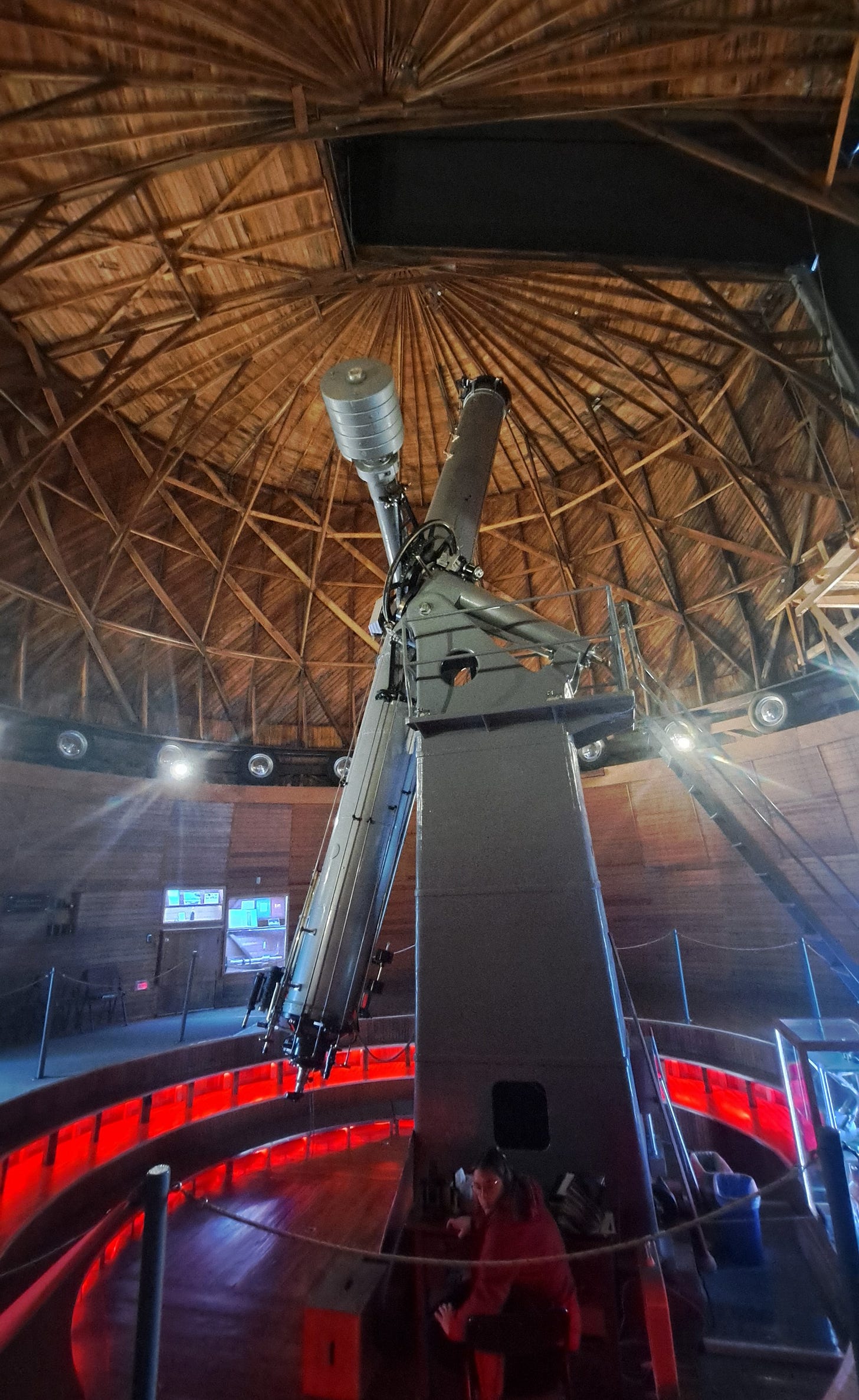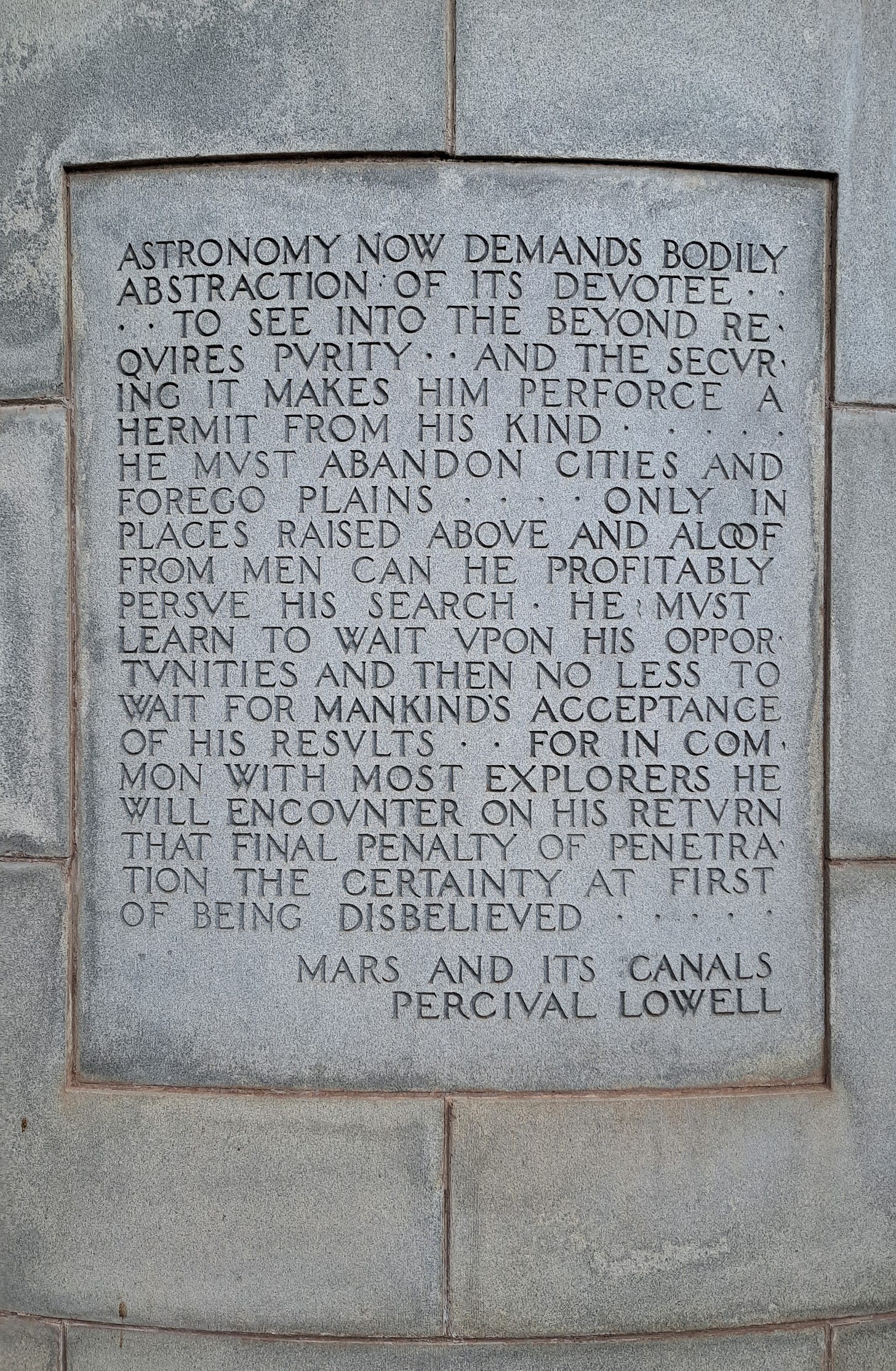While passing through Flagstaff AZ on my 70 Summits adventure, I absolutely had to make time on this trip to also visit the famed Lowell Observatory, right outside the city. Astronomer Percival Lowell, with help from a survey team, selected this site above downtown Flagstaff in 1894, establishing what would later become one of the most iconic observatories in the U.S. Among other things, Pluto was discovered here.
Having conquered, allegedly, two summits earlier that day at Hualapai Mountain Park (nobody actually conquers mountains), I hustled over to Flagstaff to catch the fun at Lowell. Fortunately, the facility stays open late almost every night, and there's much to see and do.
The kind woman at the desk was very reassuring that, yes, I could see everything, despite arriving around 5:00 pm. She summed up an itinerary that led me first to Percival's own, the Clark telescope. The wood-framed dome that surrounds it rotates on car tires and wheels, which I found as fascinating as the legendary star-and-planet-gazer itself. Later in the evening, a staff member pointed it to the Wild Duck star cluster and we all got to take a look.
Lowell was especially enamored with Mars (as am I). He hoped to use powerful telescopes to analyze the red planet for signs of intelligent life, which he was pretty well convinced could exist there. He'd been inspired by the Italian astronomer Schiaparelli who had observed linear features on Mars. When Lowell looked, he saw canals. That got the public excited about the potential for Martian life, though astronomers generally thought his grand assumptions were, in a nutshell, a buncha bunk.
Of course, Lowell did not find any little green men staring back at him in his 24-inch Clark refractor telescope. But he had a lovely time mapping out the details he could see, and writing extensively about it all. Those blurred linear features, he conjectured, could indeed infer civilization!
He also theorized the existence of a ninth Planet X, but could not locate it, hard as he tried. When a letter and drawings arrived from a young Clyde Tombaugh from Kansas, who'd built his own telescope from Buick parts and farm equipment, the observatory hired him. Within a year, in February 1930, Tombaugh found Pluto--a tiny dot among thousands of stars that had obviously moved when he compared the photographic plates.
I checked out Tombaugh’s work, then the displays and artifacts at the museum, which included Clyde's homemade telescope, plus a nice exhibit on astronomer Elizabeth Roemer. Roemer began observing sunspots when she was ten (she's worth Googling). Someone offered a cool presentation on the motion of the cosmos, while others had telescopes set up outside and pointed to everything from Saturn to the Andromeda Galaxy.
If you like stars and northern Arizona is on your agenda, do check out the observatory. Flagstaff is a dark-sky city so the stargazing can be quite excellent, even in town.





